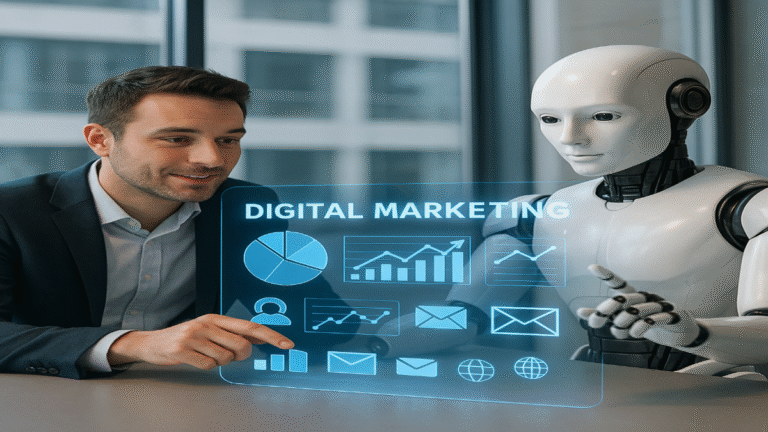Meta Description: Third-party cookies are fading, but Customer Data Platforms (CDPs) are rising. Discover how CDPs are essential for leveraging first-party data, enabling personalization, and future-proofing your marketing in a cookieless world.
The digital marketing landscape is bracing for a fundamental transformation: the demise of the third-party cookie. For years, these tiny trackers fueled cross-site targeting, retargeting, and measurement. Their phase-out, driven by privacy regulations (like GDPR and CCPA) and browser initiatives (led by Google Chrome), represents a monumental shift, forcing marketers to rethink their entire approach to understanding and engaging audiences online.
In this evolving ecosystem, the spotlight turns dramatically towards first-party data – the information brands collect directly from their customers with consent. But collecting this data is only half the battle. The real challenge lies in unifying, managing, and activating it effectively. Enter the Customer Data Platform (CDP), a technology rapidly moving from a “nice-to-have” to an absolute necessity for navigating the cookieless future.
CDPs are becoming the central nervous system for customer-centric marketing, providing the infrastructure needed to thrive when third-party data sources become unreliable. Let’s explore why their rise is so intrinsically linked to the end of the third-party cookie and how they empower modern marketing teams.
What Exactly is a Customer Data Platform (CDP)?
Before diving deeper, let’s clarify what a CDP is (and isn’t). A CDP is defined by the CDP Institute as “packaged software that creates a persistent, unified customer database that is accessible to other systems.”
Breaking that down:
- Packaged Software: It’s typically an off-the-shelf solution, though configurations vary widely.
- Creates a Persistent, Unified Customer Database: This is the core function. A CDP ingests data from multiple online and offline sources (website, app, CRM, POS, email, support tickets, etc.), cleanses it, and uses identity resolution techniques to stitch it together into a single, comprehensive profile for each individual customer (often called the “Single Customer View” or SCV). This profile persists over time.
- Accessible to Other Systems: The unified data and segments created within the CDP can be easily pushed out to various marketing and analytics tools (email platforms, ad networks, personalization engines, business intelligence tools) for activation and analysis.
Crucial Distinctions:
- CDP vs. CRM (Customer Relationship Management): CRMs primarily manage direct customer interactions (sales, service). CDPs ingest a broader range of data, including anonymous website visitors, and focus on creating a unified profile for marketing segmentation and activation.
- CDP vs. DMP (Data Management Platform): DMPs were largely built for advertisers using anonymous, third-party cookie data to target audiences for digital advertising. They often deal with segments, not persistent individual profiles, and their reliance on third-party cookies makes their traditional function less viable post-cookie. CDPs focus primarily on first-party data and known customer identification.
Essentially, CDPs are designed to give brands control over their own customer data, unifying it into actionable intelligence.
Why the Cookieless World Makes CDPs Indispensable
The decline of third-party cookies directly amplifies the need for the capabilities a CDP provides:
- The First-Party Data Imperative: Without third-party cookies for cross-site tracking, brands must rely on the data they collect directly. CDPs are purpose-built to centralize, manage, and make sense of this valuable first-party data.
- Need for Unified Customer Understanding: As external tracking diminishes, understanding customer behavior across your owned channels becomes paramount. CDPs break down data silos (marketing, sales, service) to provide that holistic, 360-degree view of each customer’s journey with your brand.
- Powering Meaningful Personalization: Generic marketing won’t cut it. Consumers expect personalized experiences. CDPs provide the rich, unified data needed to tailor website content, email messaging, product recommendations, and offers to individual preferences and behaviors – based on reliable first-party signals.
- Enabling Privacy-Compliant Targeting: CDPs help manage consent and allow marketers to build audience segments based on consented first-party data. These segments can then be activated in privacy-preserving ways, such as uploading custom audiences to “walled garden” ad platforms (Google, Facebook) or using other emerging identity solutions.
- Improving Measurement & Attribution: While multi-touch attribution becomes more complex without cookies, CDPs help by providing a clearer picture of interactions across owned touchpoints, enabling more accurate measurement of first-party data-driven campaigns.
- Supporting Data Governance & Compliance: With features for managing consent, data access, and data deletion requests, CDPs help organizations adhere to privacy regulations like GDPR and CCPA when handling customer information.
How CDPs Work: The Engine Room of First-Party Data Strategy
Understanding the typical workflow of a CDP highlights its value:
- Data Collection: Ingests data in real-time or batches from diverse sources:
- Digital: Website activity (via SDK/tag), mobile app usage, email engagement, social media interactions.
- Transactional: E-commerce purchases, POS data, subscription details.
- CRM & Service: Support tickets, sales interactions, loyalty program data.
- Offline: In-store data, event attendance (when digitized).
- Data Unification & Identity Resolution: Cleanses, validates, and standardizes incoming data. Critically, it uses deterministic (e.g., email address, customer ID) and probabilistic matching techniques to link different data points and devices back to a single individual, creating the persistent Single Customer View (SCV).
- Audience Segmentation & Profiling: Allows marketers to easily build complex audience segments based on any combination of attributes, behaviors, or predictive scores stored in the unified profile (e.g., “High-value customers interested in Product X who haven’t purchased in 90 days”).
- Data Activation: Pushes the unified profiles and audience segments to other marketing and business tools for execution:
- Email Marketing Platforms: For personalized email campaigns.
- Ad Platforms: For targeted advertising (custom audiences).
- Website Personalization Tools: For dynamic content delivery.
- Analytics & BI Tools: For deeper analysis and reporting.
- Customer Service Tools: To provide agents with customer context.
The Tangible Benefits of a CDP-Powered Strategy
Implementing a CDP isn’t just about adapting to the cookieless world; it’s about driving significant business value:
- True Single Customer View: Eliminates fragmented data and provides a holistic understanding of each customer.
- Dramatically Enhanced Personalization: Deliver tailored experiences across all touchpoints.
- Improved Customer Experience & Loyalty: Make customers feel understood and valued.
- Increased Marketing Efficiency & ROI: Target more effectively, reduce wasted ad spend, and improve conversion rates.
- Agility & Faster Time-to-Market: Quickly build segments and launch campaigns based on real-time data.
- Better Cross-Functional Collaboration: Provides a shared source of customer truth for marketing, sales, and service teams.
- Future-Proofing: Builds a sustainable marketing foundation based on owned data assets, resilient to external ecosystem changes.
- Enhanced Compliance Capabilities: Aids in managing consent and adhering to privacy regulations.
Considerations Before Diving In
While powerful, a CDP requires strategic implementation:
- Clear Objectives: Define specific use cases and goals you want to achieve.
- Data Strategy: You need a plan for collecting valuable first-party data – the CDP manages it, but doesn’t magically create it.
- Vendor Selection: Choose a CDP whose capabilities, integrations, ease of use, and cost align with your needs.
- Integration Effort: Connecting various data sources and activation tools requires technical resources.
- Organizational Readiness: Requires collaboration between marketing, IT, data teams, and potentially legal.
Conclusion
The phase-out of third-party cookies marks a pivotal moment for digital marketing, accelerating the shift towards a privacy-first, customer-centric approach. In this new landscape, Customer Data Platforms are no longer a luxury but essential infrastructure. They provide the technological foundation required to ethically collect, unify, and activate valuable first-party data, enabling brands to build direct relationships, deliver truly personalized experiences, and gain a sustainable competitive advantage. Investing in a robust CDP strategy isn’t just about replacing cookies; it’s about building a more resilient, effective, and customer-respecting future for your marketing efforts.




